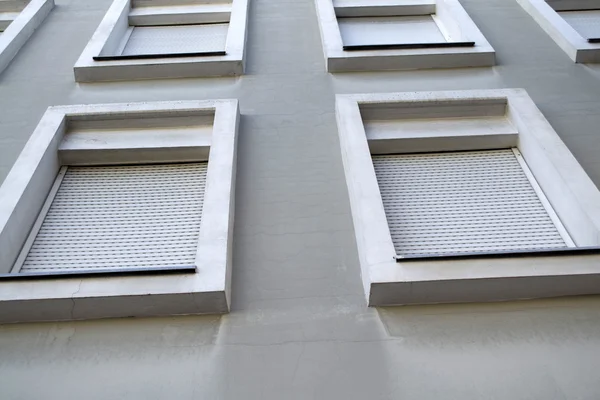Horizontal Louvres Enhances Building Design with Light Control, Privacy and Ventilation
- Written by Viw Magazine
Horizontal louvres are a type of architectural feature that consists of horizontally oriented slats or blades used for various purposes in building design. They are typically made from materials such as aluminium, wood, or steel, and are arranged parallel to each other with a gap in between to allow for airflow, sunlight control, and privacy.
Horizontal louvres can be found in a wide range of building types, including commercial, residential, and institutional buildings. They are commonly used in facades, windows, doors, sun shading systems, and ventilation applications. Horizontal louvres can be fixed, operable, or motorized, depending on the desired functionality and design intent.
Benefits of Horizontal Louvres
Horizontal louvres offer several benefits in building design, including:
- Light Control: Horizontal louvres can regulate the amount of natural light entering a building. By adjusting the angle of the slats, they can reduce glare and heat gain, while still allowing for natural daylight to penetrate the interior spaces. This can contribute to energy savings and enhance occupant comfort.
- Privacy: Horizontal louvres can obstruct the view from the outside while maintaining views from the inside. This can provide privacy and screening for certain areas of a building, such as windows facing neighbouring buildings, or create privacy in outdoor spaces like balconies or patios.
- Aesthetic Appeal: Horizontal louvres can enhance the overall design of a building. They are available in various materials, finishes, and blade shapes, allowing for creative design possibilities. Horizontal louvres can be designed to complement the architectural style and colour palette of a building, contributing to its overall design statement.
- Ventilation: Horizontal louvres can promote natural ventilation by allowing airflow into the building. This can improve indoor air quality and reduce the reliance on mechanical ventilation systems, contributing to energy savings.
- Weather Protection: Horizontal louvres can provide additional protection to the building's envelope by acting as a barrier against wind-driven rain, debris, and other environmental elements. This can help to reduce maintenance requirements and extend the lifespan of the building's facade.
In summary, horizontal louvres offer several benefits in building design, including light control, privacy, aesthetic appeal, ventilation, and weather protection. They are versatile and functional architectural features that can be customized to suit different design and functional requirements.
Types of Horizontal Louvres
Several types of horizontal louvres can be used in building design, including:
- Fixed Louvres: Fixed horizontal louvres are non-adjustable and remain in a fixed position. They are commonly used in building facades, windows, and doors to provide shade and reduce glare.
- Operable Louvres: Operable horizontal louvres are adjustable and can be opened or closed manually or with a motorized system. They are commonly used in ventilation systems, sun shading systems, and privacy screens.
- Aerofoil Louvres: Aerofoil horizontal louvres have a curved, aerodynamic shape that provides superior airflow control and reduces wind resistance. They are commonly used in commercial and industrial buildings.
- Elliptical Louvres: Elliptical horizontal louvres have an elliptical-shaped blade that provides a distinctive look and can enhance the aesthetic appeal of a building. They are commonly used in modern architectural designs.
- Louvre Windows: Louvre windows are a type of horizontal louvre that can be opened and closed to allow for natural ventilation. They consist of a frame with multiple horizontal blades that can be adjusted to control the amount of air entering the building.
- Louvre Doors: Louvre doors are a type of horizontal louvre that can be used as entrance doors or partition doors. They consist of a frame with multiple horizontal blades that can be adjusted to provide privacy and ventilation.

In conclusion, several types of horizontal louvres can be used in building design, including fixed, operable, aerofoil, elliptical, louvre windows, and louvre doors. The choice of Louvre type will depend on the desired functionality, aesthetic appeal, and design intent.
Conclusion
In conclusion, horizontal louvres are versatile and functional architectural features that can provide natural light control, privacy, ventilation, and aesthetic appeal to buildings. They are available in various materials, finishes, and blade shapes, allowing for creative design possibilities and customization to suit different design and functional requirements. Horizontal louvres are commonly used in building facades, windows, doors, sun shading systems, and ventilation applications in commercial, residential, and institutional buildings. By offering a range of benefits such as light control, privacy, aesthetic appeal, ventilation, and weather protection, horizontal louvres have become a popular choice in contemporary architecture.






